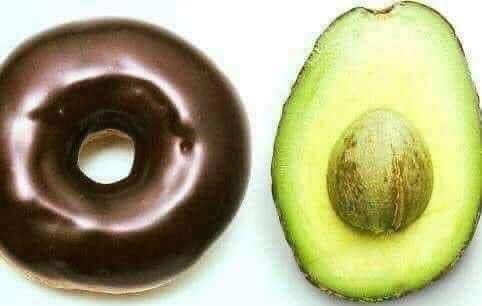
Heart racing. A pit in my stomach. Remember to breathe…
This is the wave of panic that hits me every time I press “publish” on a blog or recipe. A million questions of doubt go through my mind — Will people like it? Or hate it? What if it is too controversial? What if my advice somehow causes harm?
So why do I continue to write and publish and take these risks? Because I truly believe that I have a unique perspective to bring to the (figurative and literal) table. There is so much nutrition advice out there — most of it sensationalized “fad” advice — that it is doing a disservice. And that isn’t fair to you, someone who is just trying to do your best.
That familiar wave of panic struck again this past week when a Facebook comment popped up on the Nut Butter Energy Bites recipe I posted on Wednesday. No, it wasn’t a negative review or a scathing comment berating my recipe. It was a simple question: “Do you know the calories in each bite?”
Questions of doubt immediately bubbled up — Should I have included the calorie count? What about a suggested serving size? What if someone thinks that since they are healthy they have “permission” to eat them all in one sitting? What if I ruin someone’s attempt at healthy eating? Dramatic, I know, but real.
There are really two ways I could address this Facebook question. The first is short and simple but goes against what I hold to be true about healthy eating. The second is a bit more nuanced and may even be controversial, but is much more aligned with my personal and professional beliefs.
It would be easy to succumb to option one. I mean, all I would have to do is type three simple numbers. But once I put those numbers out there I would feel the need to reassure you. So please keep reading so I can dive a little deeper.
What about the second type of answer? I tried to honor this approach in my response to the Facebook question, an answer that took an agonizingly long time to write and an even longer time to build up the courage to hit “reply:”
“I'm not a big fan of counting calories, instead, I like to think about what a given food provides in terms of nutrients - in the case of these energy bites, they provide healthy fat from the peanut butter and chia and complex carbohydrates from the oats. But...I went ahead and did the nutrition calculation - I'll DM you with more info. If anyone else is interested, send me a quick message and I'll get back to you.”
For the record, no one else sent me a message requesting the calorie information. I was surprised by that, but in a way, thankful.
So what do I think about calories?
I was taught that “a calorie is a calorie,” leading one to believe that all calories are created equal. I was also taught that to lose weight, one must consume fewer calories than they expend, to maintain weight this equation must be equal, and to gain weight you must eat more calories than you use. I went on to teach this approach to clients and patients in my early career as a dietitian. It is a simple “calories in, calories out” math equation, after all, isn’t it?
But, eventually, I began to have doubts about this conventional wisdom. Are all calories really created equal? Sure, at the most basic level, a calorie is a unit of energy. But once you ingest them there is a world of difference in how calorie sources make you feel.
This tweet demonstrates the point quite simply:
Laura goes on to explain that a donut and half an avocado have roughly the same calories. What I hope this example demonstrates is that only counting straight calories just doesn’t make sense.
So how should calorie information be used? First, acknowledge that calories are a part of the equation but not the whole equation. They are not even the biggest part of the equation. There is so much more information that can tell you if a food is really healthy or not:
What is the macronutrient profile? Macronutrients include protein, carbohydrates, and fat. Each brings something different to the table.
How satiating are the ingredients? Satiation is the feeling of fullness and how long it lasts. Protein, fiber from unprocessed carbohydrates, and fat all help to keep you satisfied. A highly processed carbohydrate or something with added sugars just can’t compete.
What is the nutrient density? These nutrients include vitamins, minerals, antioxidants — all the good stuff. And do you have to be a dietitian to know which foods are nutrient-dense? The good news is no — reach for whole, unprocessed fruits, vegetables, beans, and whole grains as often as possible and you are on your way to eating a nutrient-dense diet.
How processed is the food? The more processed the ingredients and the more added sugars there, the less nutrient-dense and satiating a food is going to be. This leads us, yet again, to reach for the foods that are minimally processed and whole — are you picking up on a theme here?
Let’s use this approach to revisit those energy bites: They are a good source of all three macronutrients — healthy fat from the nut butter and chia seeds, protein from the nut butter, and complex carbohydrates from the oats. In addition to the satiating fat and protein, the fiber in the chia seeds and oats will give them some staying power. These bites are also a good source of a number of nutrients, including B-vitamins and calcium. Finally, the recipe does call for honey and chocolate chips, two forms of processed carbohydrates and sugar – thus, you may not want to eat the whole batch in one sitting.
What does that all mean? At a reasonable serving size (1-2 energy bites, say), they will provide enough filling fat, protein, and fiber to act as a lasting snack. Pair them with some fresh fruit and cheese and you have yourself a meal (perfect for a day out hiking). Doesn’t that feel better than playing the calorie game?
So the next time you are tempted to succumb to calorie guilt, evaluate a given food or ingredient using these parameters. Hopefully, this exercise will show you that foods are so much more than calories. It is time to put your food to work! (hey, that sounds familiar…)
I’d really like to know how this approach lands for you, so please comment below! And as always, likes and shares are appreciated.





I love this mentality. So many times have I been told calories in/out = weight loss/gain, but I so agree it's more than that, even looking at how your metabolism functions. If you start going too low on calories, you start retaining fat and burning muscle in "starvation mode". Keep writing, I love your courage!
Thanks Allison, actually had to get food while reading, reading these make me hungry too. I have to try those bites:)